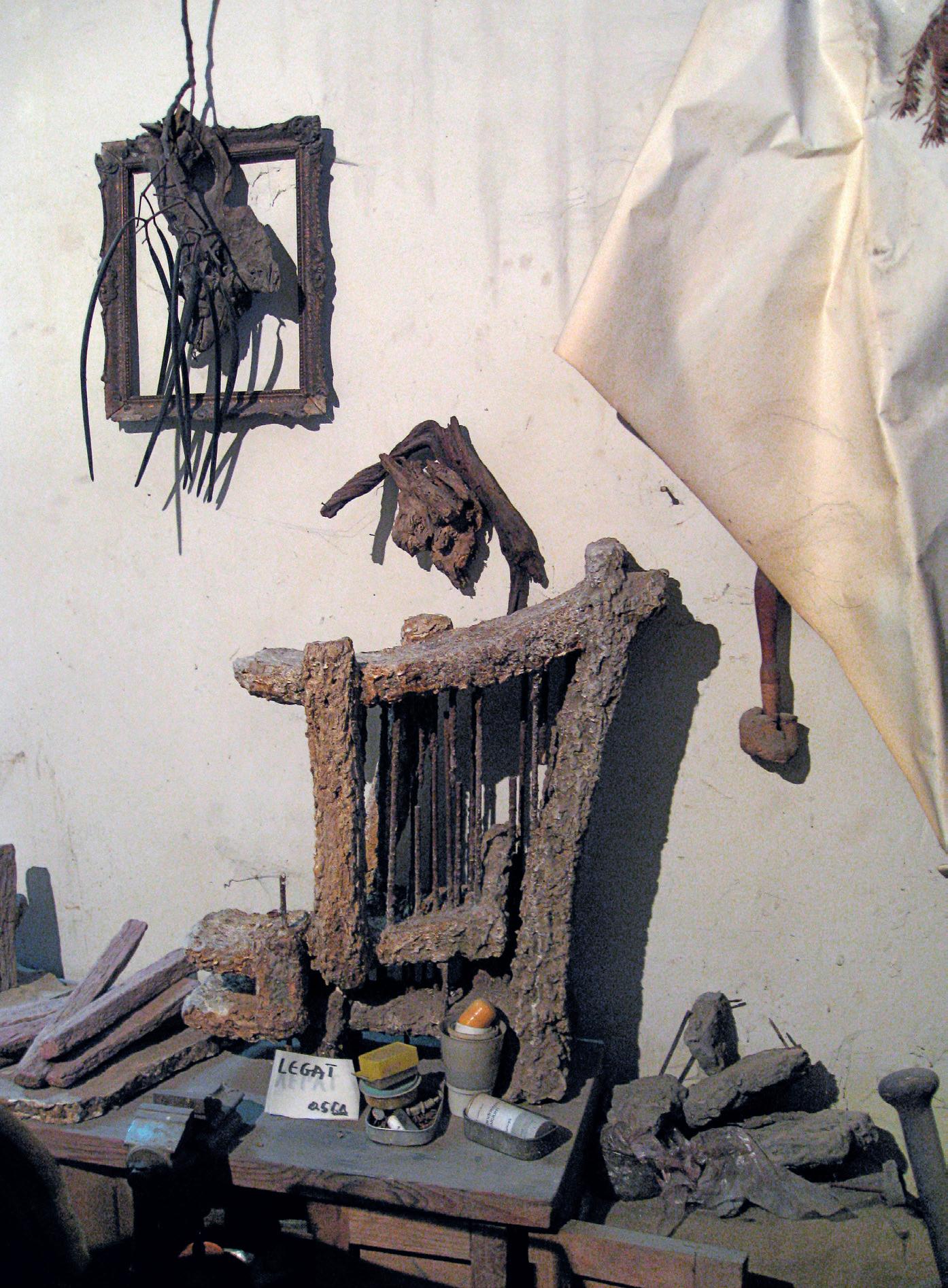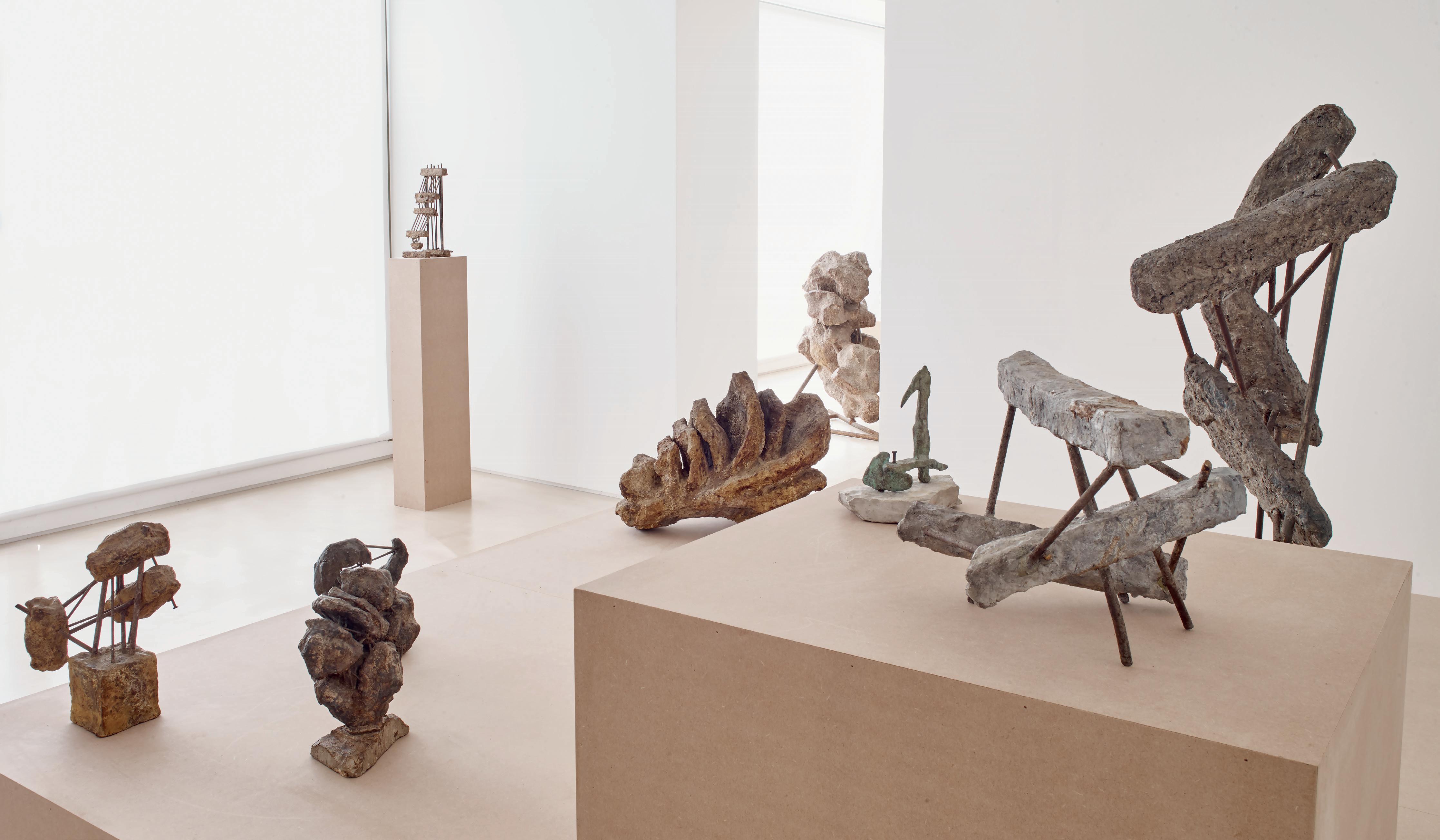

Contents
Preface 6
Ingrid Swenson
Olga Jevrić: Spatial Compositions 9
Fedja Klikovac
A Wonderful Artist 17
Richard Deacon
in her own time 23
Phyllida Barlow
Olga Jevrić 37
Ješa Denegri
Olga Jevrić at peer 46
Olga Jevrić at Handel Street Projects 68
Olga Jevrić: Space and Time 79
43 Theses 84
Olga Jevrić
Olga Jevrić sculptures, 1950–1970 87
Joan Key
Photographic credits 95

Olga Jevrić: Spatial Compositions
Fedja Klikovac
My first encounter with Olga Jevrić’s work was in 1981 at the wonderful solo exhibition at the Museum of Contemporary Art in Belgrade.1 Comprising 141 sculptures, it was the most comprehensive survey of her work to date. The second time I saw it was in 1988 at the gallery of the Student Cultural Centre (SKC Gallery).2 This too was an important exhibition, placing her work in the contemporary context – a time when younger artists were looking to the past and re-examining modernism.3 It also held a special importance for those of us working in and around the gallery, resurrecting as it did an interest in a new kind of sculpture. Both of these were inspirational shows, and they had a significant impact on the art scene of the time.
The work of Olga Jevrić has a special place in the pantheon of postwar European sculpture. The two exhibitions of Jevrić’s work at PEER and Handel Street Projects present works from all phases of her long career, illustrating how her interest in pure form and structure turned increasingly in the direction of a poetics of space. Her first solo exhibition in Belgrade, Spatial

Compositions, took place in 1957, eight years after she graduated, confirming her position as a ‘serious artist’. Subsequently, she was asked to contribute to the Yugoslav pavilion at the 29th Venice Biennale in 1958, where she exhibited eight works alongside four other Yugoslav artists, drawing acclaim from a number of prominent artists and critics.4

The Venice presentation was followed by an exhibition at Galleria Notizie in Turin in 1959,5 and in 1961 her work was shown in Britain for the first time in a three-person exhibition at Drian Galleries.6 That same year she took part in a group exhibition at the Tate Gallery, Contemporary Yugoslav Painting and Sculpture, and in 1970 was included in Contemporary Yugoslav Sculpture
at the Hayward Gallery. More recently, in 2016, a selection of eleven small works were shown as Olga Jevrić: Proposals for Monuments at the Henry Moore Institute in Leeds.
Born in Belgrade in 1922, Jevrić developed her unique visual language at a time when, amid the ideological constraints of Socialist realism, there was little space for personal expression. Yugoslavia’s 1948 schism with the Soviet Union marked the start of a new era for the country. During the 1950s and 1960s a number of reforms were introduced, which helped the young Yugoslav society position itself between East and West. Workers’ Self-Management, a unique brand of socialism,7 was introduced, and in 1956 the Non-Aligned Movement was founded on Brioni island (formalised in Belgrade in 1961). New cultural contacts were established, which resulted in a number of exhibitions travelling from Europe and the United States to various cities in Yugoslavia: Contemporary French Art in 1952; Henry Moore in 1955; Modern Art in the United States: A Selection from the Collections of the Museum of Modern Art, New York in 1956; and Contemporary Italian Art in 1956–57.8 In 1958–59 the important architecture exhibition Built in USA : Post-War Architecture, originally mounted in 1953 at the Museum of Modern Art in New York, also toured Yugoslavia.9
Jevrić’s first abstract works in the early 1950s consisted of a series of proposals for memorial monuments, none of which were realised in the monumental way she had envisaged. Principally this was because these sculptures – or ‘spatial compositions’, as she called them – belonged to the domain of ‘high modernism’,10 being abstractions of a non-associative type. Jevrić
typified them both as a departure ‘from learned schemes’ and as an opportunity ‘to be true to myself and to give myself freedom’.11 Her early work is fundamentally linked to medieval stećci,12 monolithic medieval tombstones that are found across Bosnia and Herzegovina, Serbia, Croatia and Montenegro, leading Jevrić to assert that she could not have made her sculptures anywhere other than in her own country. They are, she explained, informed by ‘war, uncertainty, the slaughter of innocent people, social upheavals and disorder of all social norms’.13
Jevrić claimed that her sculptures derived from ‘the system of constructing based on dialectical structural principles’. To understand phenomena, according to this view, demands that we treat them as a set of relations among elements. Jevrić’s commentary on her own work suggests an interest in both structuralism and dialectical materialist philosophy; yet in spite of the pervasiveness of formalist tendencies in her work, her passion for materials is always clear. Although she made bronzes, her true material was concrete mixed with iron dust, which would oxidise to give her works their unique colour and texture. Jevrić’s choice of concrete and iron in her work of the 1950s and 1960s – a period when other sculptors were also replacing traditional media with industrial materials – reflected a wider omnipresence of these materials in Yugoslavia. State-of-the-art modernist towns such as New Belgrade were being built at a rapid pace, and sculpture and architecture now seemed to share the same language.14 If these materials were giving shape to a new Yugoslavia, then they were also prompting new ways of making sculpture. From now on, ‘sculpting’
 Former Central Pavilion (known as Kula, or ‘Tower’), Staro sajmište, Belgrade, dated 1937. Jevrić’s studio was situated on the ground floor
Former Central Pavilion (known as Kula, or ‘Tower’), Staro sajmište, Belgrade, dated 1937. Jevrić’s studio was situated on the ground floor

 Details from Olga Jevrić’s studio, 17 April 2009
Details from Olga Jevrić’s studio, 17 April 2009
would often be referred to by Jervić and others as ‘building’.
Over time Jervić deployed a variety of techniques. In her early works, the initial idea would find form in clay, which was then covered with molten metal, most often iron. Later, having arrived at her preferred combination of cement mixed with iron oxide – a compound she called ‘ferroxide’ – she would produce larger works in parts, constructing a frame of wooden slats which she would wrap with wire mesh and then cover with the ferroxide mixture, the elements held together by iron rods. These works represented a leap from a sculpture of the body, determined by finite closed volumes, to unbound, open spatial abstract sculpture. As a result of this shift they succeeded in uniting opposites, bringing together an expressive, rebellious, existentialist attitude with decidedly constructivist tendencies.

Small but significant changes can be identified in her subsequent work. The compact early objects gave way to more disjointed, skeletal pieces, while in the later works iron rods are buried deep in the fabric of the sculpture before disappearing altogether in her final works, becoming architectural if not minimalist in form but, once again, highly expressive.
Jevrić’s work owed a lot to her early interest in music. She studied piano at university before enrolling at the Belgrade Academy of Fine Arts, but stopped playing because of painful cramps in her hands. Indeed, the shapes and formal aspects of the hammers and strings of a piano are ubiquitous in her work, materialised in nails, wires and lumps of matter connected with metal spines. She spoke of music as itself a spatial event, with melodic lines spreading through time and space,
ascending and descending, with scales, pauses, intervals, silence and rhythm all contributing to the construction of her ‘spatial compositions’.
Although music is so often seen as the most abstract art form, Jevrić’s ambition was perhaps to give it concrete form. She was equally fascinated by the internal workings of the human body. A favourite place was the Natural History Museum in Belgrade (as well as other similar museums abroad), and she described her excitement at seeing for the first time human organs, lungs, hearts and livers, together with the organic phenomena of crystallisation and growth. It is perhaps in the coalescence of these two sets of interests – music and the body – that we find the vibrant, creative matrix of Jervić’s work and its concern with how bodies interlink, connect, join and separate.
The last time I met Olga Jevrić was on 24 January 2014, at her studio in one of the massive former Belgrade Fair Buildings.15 I visited her with Frances Morris, then the director of Tate’s international collection. Smoking incessantly, Olga played Vivaldi on a small tape recorder as she recalled her early days as part of the extraordinary artistic community housed on that site, which was constructed in 1937 as an exhibition centre to host world trade events and expositions; its rich cultural history includes being the location of the first TV transmission in the Balkans, in 1938. Later, the Yugoslav premiere of Samuel Beckett’s Waiting for Godot took place there, in 1954 in the studio of the artist Mića Popović, 16 and the art critics Gillo Dorfles, Jean Cassou and Herbert Read visited Jevrić in her studio in the former Central Pavilion (known as Kula, or ‘Tower’). But the Fair complex also had














 Reverse view of the installation shown on the previous spread
Reverse view of the installation shown on the previous spread

